Status Demolished | Demolished 2002–07 | |
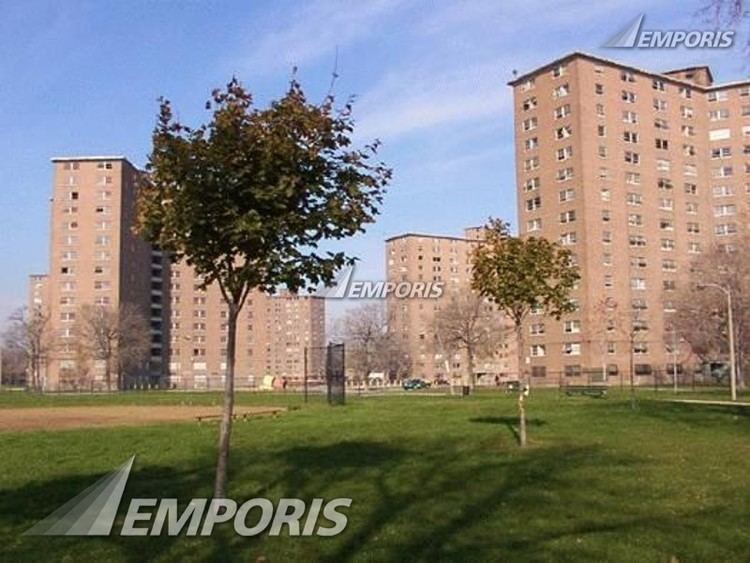 | ||
Location Bordered by Cabrini St. (North), Ashland Ave. (West), 15th St. (South), Blue Island Ave. (East)Chicago, Illinois, United States Constructed 1938–39; Addams Homes1942–43; Brooks Homes1960–62; Brooks Extensions1951; Loomis Courts1952–55; Abbott Homes GoverningBody | ||
Demolition of the last abla homes high rise in chicago
ABLA Homes (Jane Addams Homes, Robert Brooks Homes, Loomis Courts and Grace Abbott Homes) was a Chicago Housing Authority (CHA) public housing development that comprised four separate public housing projects on the Near-West Side of Chicago, Illinois. The name "ABLA" was an acronym for four different housing developments that together constituted one large site. The four housing developments that made up ABLA were: the Jane Addams Homes, Robert Brooks Homes (including the Robert Brooks Extension), Loomis Courts, and the Grace Abbott Homes totaling 3,596 units. It spanned from Cabrini Street on the north to 15th Street on the south, and from Blue Island Avenue on the east to Ashland Avenue on the west. Most of the ABLA has been razed for Roosevelt Square, a new mixed-income community development. For most of their existence, the ABLAs held more than 17,000 residents (though only 8,500 were officially on the lease), giving it the second largest population in the CHA. It was second only to the Robert Taylor Homes and Cabrini–Green in land area and had a higher occupancy than Cabrini–Green.
Contents
- Demolition of the last abla homes high rise in chicago
- Jane Addams and Grace Abbott Homes
- Robert Brooks Homes and ExtensionsLoomis Courts
- Cross Ashland
- Crime and Violence
- Ruth Mae McCoy
- Existing conditions
- CHA Plan for Transformation
- The Vill
- References
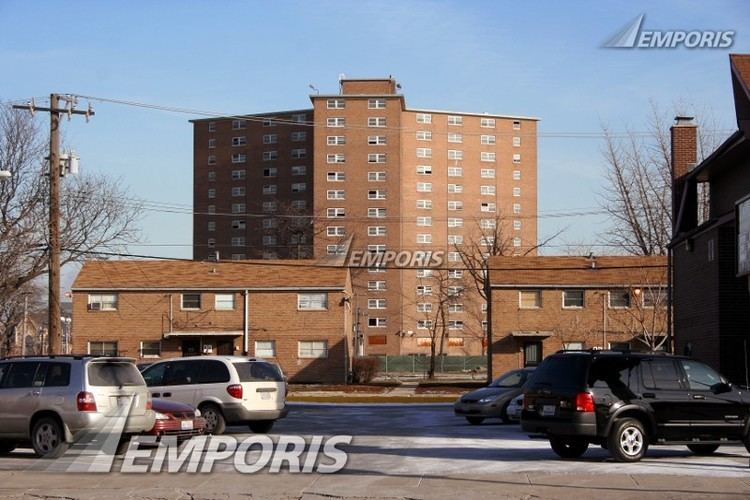
Jane Addams and Grace Abbott Homes
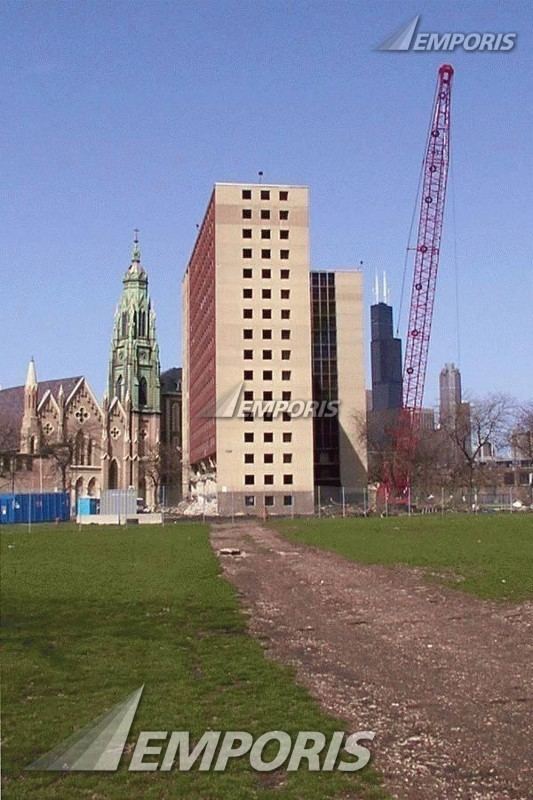
The Jane Addams Homes (one of the first three public housing projects in Chicago) consisted of 32 buildings of 2, 3, and 4 stories (987 units) built in 1938 by Franklin D. Roosevelt's PWA Program. They housed hundreds of families over several decades until they were vacated in 2002. They were famous for their animal sculptures in the court area.
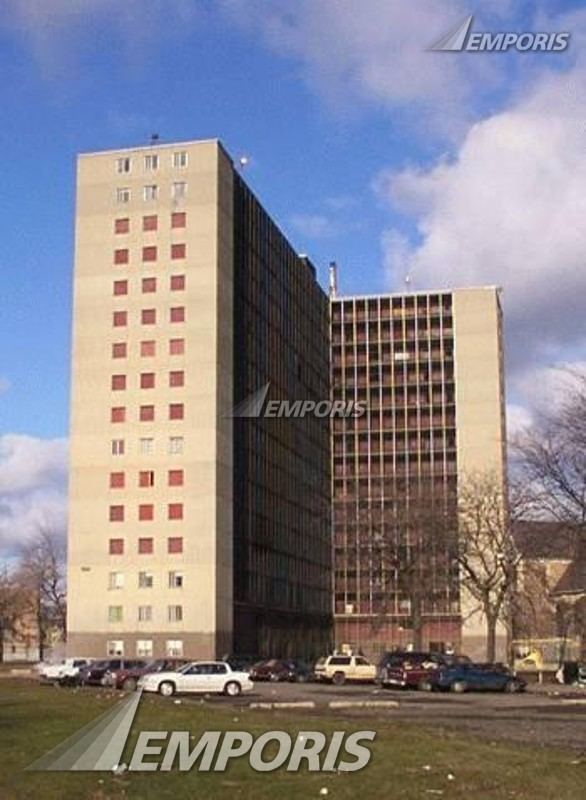
The buildings have largely been demolished. The one remaining building at 1322-24 West Taylor is being incorporated into plans for a new National Public Housing Museum, as part of the International Sites of Conscience. Originally made up of 7 15-story buildings and 33 2-story rowhouse buildings (1,198 units), the Grace Abbott Homes were built in 1955. In 2005, four of the high-rise buildings were demolished, and the rest were demolished by 2007. This property is planned to be redeveloped in Phases 3-6 of the new Roosevelt Square mixed-income community.
Robert Brooks Homes and Extensions/Loomis Courts
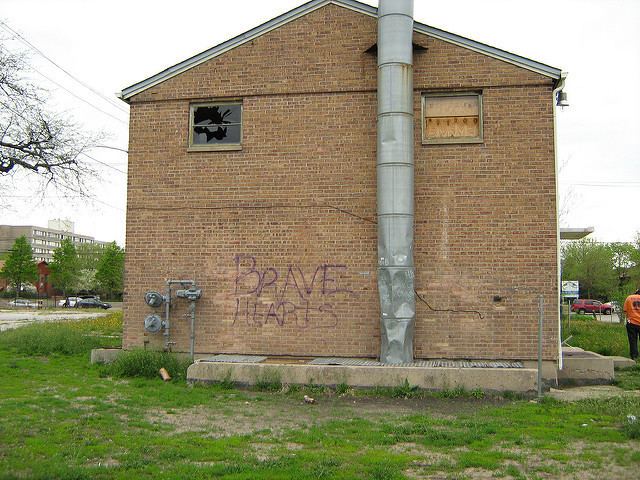
The Robert Brooks Homes were built in 1943 with 835 rowhouse units, and were later rebuild between 1997 and 2000 the original project was rebuilt in two phases. The renovations reduced the housing density resulting in 330 housing units. In 2005, the site was repurposed and became part of a new mixed-income development called Roosevelt Square.
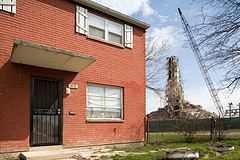
The Robert Brooks extensions were built in 1961 and were made up of three 16-story buildings (450 units). One of the three buildings, Racine, was demolished in 1998. The remaining two buildings were demolished in 2001.
The Loomis Courts were built in 1951 and the 126-unit complex consisted of two seven-story buildings. Instead coming from of public housing funds, project funding came from city and state funds. In 2005, the CHA started a 2-phase rehabilitation process that preserved the property as affordable rental housing.
Cross Ashland
Just west of the ABLA's was a small neighborhood affectionately known as "'cross Ashland," named for the southern twang where many residents of the downtown and the projects pronounced its location. Bordered by Ashland Ave. to the east, Western Ave. on the west, the 15th Pl. train tracks to the south and Roosevelt Rd. on the north. This area originally went as far north as Polk, pre-dating the Medical district. Many blacks and Jews lived in the area through much of the 20th century until the late sixties when most Jews, Poles, and Italians moved away. Cross Ashland also extended east all the way to Halsted. Before the ABLA homes were constructed many Blacks worked at the various rail yard companies at 15th St. before the companies all moved to foreign lands and the suburbs. They were proud to leave the oppressive south and work arduous hours to feed families and attend barbecues. In 2005 this community of roughly 10,000 in the fifties and 5,000 in the nineties was eventually brought to an end in a mass fire sale to land developers. Today the Cross Ashland area remains underdeveloped save for the new FBI building and University Police Station.
Crime and Violence
The housing projects were plagued by street gangs, drugs, and violent crimes. Most notably, the ABLA development was controlled by factions of the Black Gangster Disciples. In mid-1986, Break-ins by entry through bathroom medicine cabinets began occurring in the Abbott buildings. The apartments at the end of each floor bathrooms were separated by only two feet of tunnel space. Space was generally created for plumbers and janitors to have easy access to the pipes in the buildings.
Ruth Mae McCoy
On April 22, 1987, 52-year-old Ruth Mae McCoy was murdered by someone who entered her 11th floor Abbott apartment (1440 W. 13th St.) through her bathroom cabinet somewhere between 8:50-9:05 PM. McCoy called 911 at 8:45 that evening to report that someone in the apartment next door was coming through her bathroom cabinet. Due to her unintelligible responses to the operator, The call was noted as a "disturbance with a neighbor". After two more calls came through to 911 between 8:50-9:04 PM about screaming and gunshots coming from apartment 1109 (McCoy's apartment), Police arrived ten minutes later. When police arrived they attempted to go into the apartment with a key they received from the housing office when their knocks went unanswered, But the key didn't work. On April 23, 911 received a call from McCoy's neighbor worried and concerned about her whereabouts, considering she had seen police at her door the night before and she still had not seen her. Chicago Police and CHA security guards arrived back at McCoy's apartment. After the knocks and calls for McCoy went unanswered, some officers suggested to just break the door down but some CHA security guards warned them not to for two reasons: The housing authority and police department could be sued by the tenant. and the door would have to be re-secured. The following evening, a CHA official arrived at McCoy's door with a carpenter who drilled the lock on the door. McCoy was found lying on her bedroom floor shot four times; in her left shoulder, left thigh, the right side of her abdomen and right upper arm. Two men, Edward Turner, 18 and John Hondras, 21 were charged with: murder, home invasion, armed robbery, armed violence, and residential burglary. Witnesses claim that they saw the two men carrying McCoy's 19-inch color TV and rocking chair around the project in the early morning hours after her death. Due to lack of evidence, the charges against the two men were dropped after two years of the trial. The victim's daughter, Vernita McCoy, sued the Chicago Housing Authority for the cause of her mother's death in 1988.
Existing conditions
Originally home to over 17,000 residents, ABLA's population has decreased to only 2,100 due to redevelopment efforts. In the late 1990s and early 2000s, the Little Italy neighborhood, along with much of inner-city Chicago, experienced substantial gentrification. This led to the demolition or planned redevelopment of nearly all projects under the Chicago Housing Authority. Contributing factors to ABLA's decline include the University Village redevelopment of the Maxwell Street area and the expansion of the University of Illinois at Chicago's south campus.
CHA Plan for Transformation
The CHA's redevelopment plan for ABLA is named Roosevelt Square and includes 1,467 public housing units, of which 329 units were completed in 2000 as part of a complete rehab of the Brooks Homes and 383 off-site CHA replacement units were newly constructed. Construction of the remaining 775 on-site mixed-income units at Roosevelt Square began in 2004. ABLA's new physical design includes traditional Chicago-style buildings including single family homes and six-flat structures. In June 2005, the Chicago Park District reopened Fosco Park, a 57,000-square-foot (5,300 m2) community center which includes an indoor swimming pool, gymnasium, and a new daycare facility. A new Jewel/Osco supermarket opened near ABLA in January 2002. The redevelopment plan also includes an integrated "campus" green space with Smyth School and Duncan YMCA. A new fire and police station was constructed near ABLA.
The "Vill"
The common nickname for the ABLA homes is "the village," or "the vill," Due to their proximity to downtown and the UIC Medical Center/University, the ABLAs can be seen in several films and television programs:
